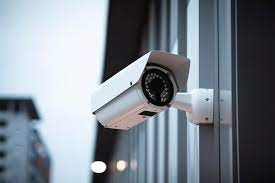Security cameras, also known as surveillance cameras, have become a ubiquitous part of modern life, playing a crucial role in ensuring safety and security cameras installation in various settings. From humble beginnings to advanced, high-tech systems, the evolution of security cameras reflects significant technological advancements and growing societal needs for enhanced security measures. This article delves into the history, technological developments, types, benefits, and future trends of security cameras.
History and Evolution
The concept of surveillance dates back to the early 20th century, but the first closed-circuit television (CCTV) system was developed in 1942 by Siemens AG in Germany for observing rocket launches. However, it wasn’t until the 1960s that CCTV systems became commercially available and started being used for security purposes.
The 1970s saw the integration of video cassette recorders (VCRs), allowing footage to be recorded and reviewed later. This development was a significant leap forward, enabling continuous monitoring and the archiving of footage for future reference. The 1990s brought digital recording and the introduction of networked cameras, which facilitated remote viewing and management of surveillance systems.
Technological Developments
- Analog to Digital Transition: The transition from analog to digital systems marked a major milestone in the evolution of security cameras. Digital systems offered higher resolution, better image quality, and the ability to compress and store vast amounts of data efficiently.
- High-Definition (HD) and Ultra HD: Modern security cameras now offer HD and Ultra HD resolutions, providing clear and detailed images. This advancement is crucial for identifying faces, license plates, and other minute details.
- Internet Protocol (IP) Cameras: IP cameras represent a significant advancement over traditional analog cameras. They use internet protocols to transmit data, allowing for remote viewing and management. IP cameras also support features like motion detection, video analytics, and integration with other security systems.
- Wireless Technology: Wireless security cameras eliminate the need for extensive cabling, making installation easier and more flexible. They connect to a network via Wi-Fi, allowing for seamless integration with smart home systems.
- Artificial Intelligence (AI) and Machine Learning: AI and machine learning have revolutionized security cameras by enabling features such as facial recognition, object detection, and behavioral analysis. These technologies enhance the effectiveness of surveillance systems by providing real-time alerts and automated responses to potential security threats.
Types of Security Cameras
- Dome Cameras: Known for their discreet design, dome cameras are typically used indoors and provide a wide field of view. Their dome-shaped housing makes it difficult to determine the camera’s direction, adding an element of unpredictability for potential intruders.
- Bullet Cameras: These cameras are cylindrical and are often used outdoors. They are easily recognizable and serve as a deterrent due to their visible presence. Bullet cameras are ideal for long-distance viewing and are often equipped with infrared (IR) LEDs for night vision.
- PTZ Cameras: Pan-Tilt-Zoom (PTZ) cameras offer the ability to pan (move left or right), tilt (move up or down), and zoom in on specific areas. These cameras are commonly used in large areas such as parking lots and stadiums where monitoring a wide area is necessary.
- Hidden Cameras: Also known as spy cameras, these are designed to be discreet and blend into the environment. They are often used in scenarios where covert monitoring is required.
- Thermal Cameras: Thermal cameras detect heat signatures, making them ideal for low-light or no-light environments. They are often used in perimeter security and critical infrastructure protection.
Benefits of Security Cameras
- Deterrence: The presence of security cameras acts as a deterrent to potential criminals, reducing the likelihood of theft, vandalism, and other crimes.
- Evidence Collection: Security cameras provide valuable evidence in the event of a crime. Recorded footage can be used by law enforcement to identify and apprehend suspects, as well as in court proceedings.
- Remote Monitoring: Modern security cameras allow for remote monitoring via smartphones, tablets, and computers. This feature provides peace of mind to homeowners and business owners by enabling them to check on their property from anywhere.
- Enhanced Safety: Security cameras contribute to overall safety by monitoring and recording activities in public spaces, workplaces, and residential areas. They help ensure compliance with safety protocols and can be used to investigate accidents or incidents.
- Operational Efficiency: In business settings, security cameras can improve operational efficiency by monitoring employee behavior, ensuring adherence to policies, and identifying areas for improvement.
Future Trends
The future of security cameras is poised to be shaped by continued advancements in technology. Key trends include:
- Integration with Smart Systems: Security cameras will increasingly integrate with smart home and business systems, allowing for seamless automation and control.
- Advanced Analytics: AI-driven analytics will continue to evolve, providing more sophisticated insights and predictive capabilities. This will enable proactive security measures and more efficient resource allocation.
- Increased Privacy Concerns: As surveillance technology advances, there will be a growing focus on balancing security needs with privacy concerns. Regulatory frameworks and ethical considerations will play a crucial role in shaping the deployment and use of security cameras.
- Cloud-Based Solutions: Cloud storage and processing will become more prevalent, offering scalable and cost-effective solutions for managing and analyzing vast amounts of surveillance data.
Conclusion
Security cameras have come a long way from their early analog roots to today’s sophisticated digital and AI-driven systems. They play a vital role in enhancing security, deterring crime, and ensuring safety across various settings. As technology continues to evolve, security cameras will become even more integral to our daily lives, offering new capabilities and addressing emerging security challenges.


